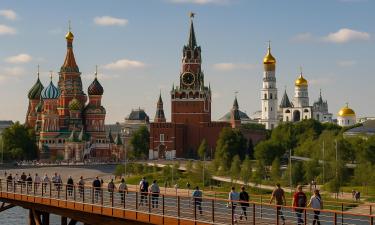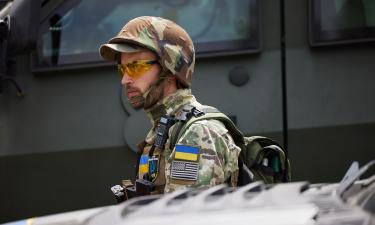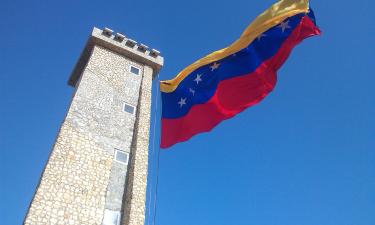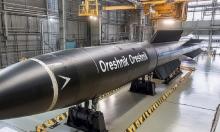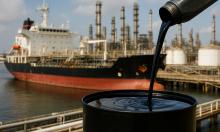Personality of the Week: His Holiness Pope John Paul II
The Mission of the People's Pope ends
Karol Josef Wojtyla (Voi-TI-wa), Archbishop of Krakow, was appointed Pope John Paul II in October 1978, the leader of the world's largest Christian community. He spent 27 years, the third longest papacy in history, bringing the Roman Catholic Church to the people, kneeling to kiss the ground of the countries he visited as a sign of respect and humility and narrowing the gap between the hierarchy and the people.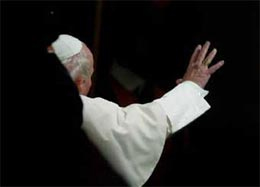
Karol Wojtyla (the 264th Pope) was born in Wadowice near Krakow in 1920. During the Second World War, he studied theology (in hiding during the Fascist occupation of Poland) and was ordained a priest in 1946, defending his PhD in 1951 (on the German philosopher, Max Scheler), becoming Archbishop of Krakow in 1964 and three years later, a Cardinal. At 58 years of age, he was appointed the youngest Pope of the 20th century.
The energy he revealed as a young man, playing football, canoeing, cycling and skiing, and adoring the theatre, was carried on in his Papacy, during which time he became the most widely-traveled Pope in history, bringing his church to his people, the one billion Roman Catholics worldwide in visits to 126 countries.
During these papal visits, he demonstrated a rare ability in communication, adapting himself to his audience and being sufficiently grand to be able to play, while being serious. For example, on a visit to Lisbon in 1991, seeing that a large crowd had gathered outside the Vatican Consulate, he appeared on the balcony, without any bodyguards and only a few metres away from the audience, and said: "So, you want me to say Goodnight? Then Goodnight".
The audience replied "Goodnight" and the Pope put his hand to his ear, pretending not to hear. The audience repeated, louder, "Goodnight!", the Pope repeated his gesture and the audience, louder, shouted "Goodnight!". Then the Pope said "Ah OK, goodnight" and he went inside to applause and affectionate laughter from the adoring crowd.
The great life of Pope John Paul II - Photo gallery
This is a typical and touching example of the simplicity of this man, the genius he demonstrated in his contact with the faithful and his desire to bring the church to his community, instead of being walled up in the Vatican, untouchable.
This desire to be near his people nearly killed him - on 13th May 1981 he was shot by Mehmet Ali Agca in Saint Peter's Square, Rome. He believed that he survived, because it was on the day of the apparition of our Lady of Fatima, and for this reason he traveled to Portugal at the first opportunity the following year to place one of the bullets in the crown on the head of the statue of the Virgin Mary in Fatima, Portugal. Later he visited Agca in prison and forgave him. Agca converted to Catholicism.
Pope John Paul II's Papacy has been marked by his views on divorce, contraception and abortion, in which he adopted a conservative stance. He would argue that if he was appointed Pope of the Roman Catholic Church, whose obligation and reason for being is to protect life, prevent the interference of Man in God's work and to defend the sanctity of the marriage vows in church, before God, what other posture could he possibly adopt?
His appointment as Pope had tremendous political consequences in Eastern Europe, since Poland was at the heart of the COMECON countries and his influence was greatly felt in the anti-government Solidarnozc.
During his Pontificate, he sponsored numerous reunions and meetings of the leaders of the main religions, looking for consensus and acceptance, tolerance and peace, apologizing for the wrongdoings by Catholics in the past and looking forward to a future of religious tolerance, respect for the human condition and friendly relations in a brotherhood of nations which live together in peace. He tried to build bridges not only between the various branches of Christianity but also other religions, becoming for example the first Pope to visit a synagogue.
Pope John Paul II published three books: "Crossing the Threshold of Hope" (October 1994); "Gift and Mystery: On the 50th Anniversary of My Priestly Ordination" (November 1996) and "Roman Tryptych - Meditations", a book of poems (March 2003) among numerous other publications.
John Paul II reinvigorated the Catholic Church at a time when it was declining in numbers, leaving it with an explosion of new members in Africa and Latin America, while bringing it into the front line of media coverage, moving the Papacy from the Vatican to be together with its people. Karol Wojtyla, Pope John Paul II, was the personification of the globalization of his church, and more than that, the globalization of religious and moral values, light at a time of darkness. He passed away peacefully on 2nd April, 2005 in his apartment in the Vatican.
Subscribe to Pravda.Ru Telegram channel, Facebook, RSS!
